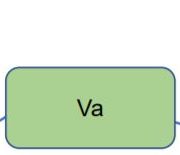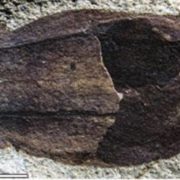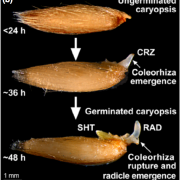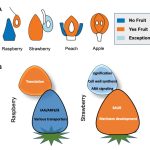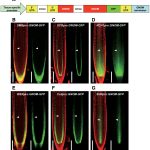Hydrolyzable tannins are incorporated into the endocarp of water caltrop
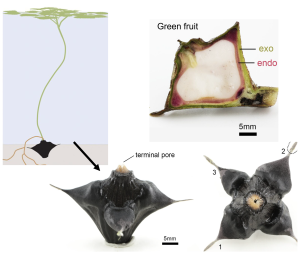 Trapa natans, also known as water caltrop or bat nut, is an aquatic plant with large seeds encased by a hardened endocarp. Due to this durable endocarp, these seeds may remain dormant underwater for up to 12 years. Huss et al. studied the anatomical and biochemical factors responsible for the hardened endocarp, focusing on the structural and compositional changes in the endocarp’s cell wall during fruit development. Histochemical staining and spectroscopy revealed chemical changes during cell wall thickening (sclerification) such as varying cellulose microfibril angles, which may contribute to mechanical reinforcement of the tissue. They also observed unbounded gallotannins (hydrolyzable tannins) which were formed in addition to lignin and cellulose during secondary wall formation. After maturation, the gallotannins become bounded to the cell wall via ester bonds and persist post maturation. Aside from the toughness and durability they confer on the cell wall, gallotannins in the endocarp are useful as defense to protect T. natans seeds against insect and microbial attacks. (Summary by Idowu Arinola Obisesan @IdowuAobisesan) Plant Physiol. 10.1093/plphys/kiad408
Trapa natans, also known as water caltrop or bat nut, is an aquatic plant with large seeds encased by a hardened endocarp. Due to this durable endocarp, these seeds may remain dormant underwater for up to 12 years. Huss et al. studied the anatomical and biochemical factors responsible for the hardened endocarp, focusing on the structural and compositional changes in the endocarp’s cell wall during fruit development. Histochemical staining and spectroscopy revealed chemical changes during cell wall thickening (sclerification) such as varying cellulose microfibril angles, which may contribute to mechanical reinforcement of the tissue. They also observed unbounded gallotannins (hydrolyzable tannins) which were formed in addition to lignin and cellulose during secondary wall formation. After maturation, the gallotannins become bounded to the cell wall via ester bonds and persist post maturation. Aside from the toughness and durability they confer on the cell wall, gallotannins in the endocarp are useful as defense to protect T. natans seeds against insect and microbial attacks. (Summary by Idowu Arinola Obisesan @IdowuAobisesan) Plant Physiol. 10.1093/plphys/kiad408


